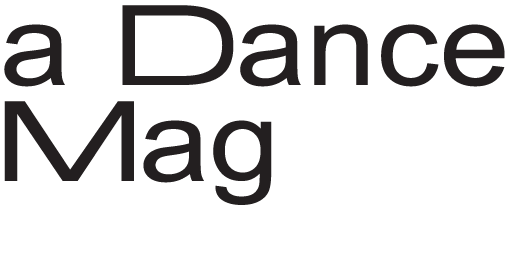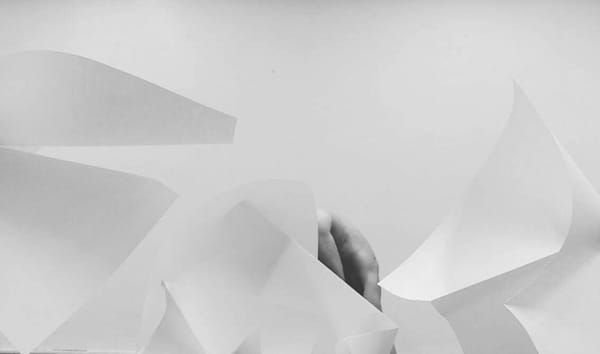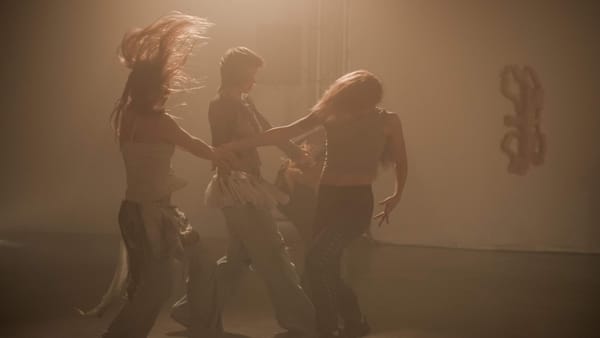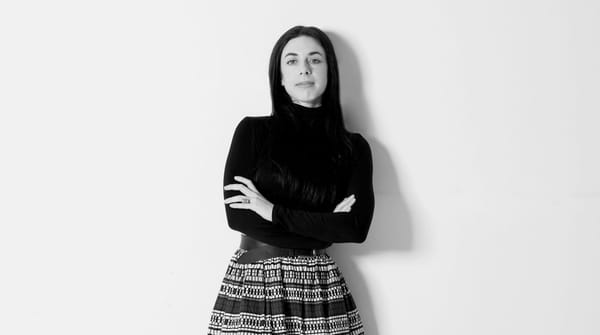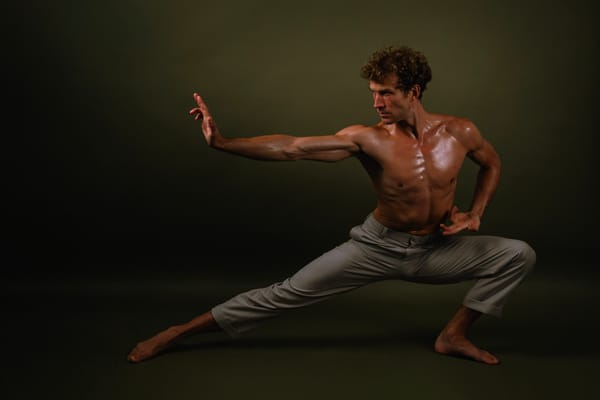The Choreography Wants: Learning to Listen in the Creative Process
By Sabrina Castillo Gallusser — Guatemala-based choreographer explores the shift from scientific planning to collaborative discovery in thirty years of dance-making.
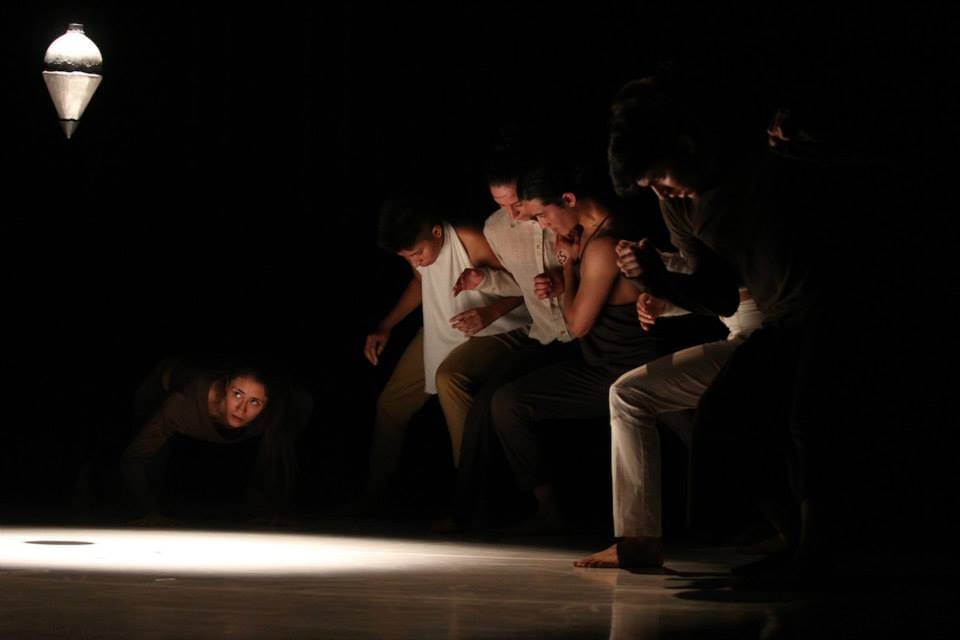
by Sabrina Castillo Gallusser
The Studio as Laboratory
I enter the studio with fear, ideas, expectations, stories sedimented in my body: a somatic discomfort, often tiredness from rising earlier than I would have liked, excitement, and hopes. Learning to enjoy the joyous moments while enduring the confusion of the creative process has taken me years to develop. For thirty years, I have choreographed. Seated on a small stool in the studio, I touch my lips. My peripheral vision seems expanded; a kind of silent, observant attitude emerges.
What I live in my life becomes entangled with what happens in my choreographies. I am often confused.
Having a background in the natural sciences, I enjoy being in the studio with an attitude similar to when I worked in the laboratory. In recent years, I have come to think that when I start working with dancers, I will know where we might be heading. I see and listen more carefully to what I encounter with the dancers in the studio. In the past, I meticulously designed my choreographies and developed movement phrases by myself, arriving at the studio with a plan to be carefully followed. This was usually transformed while working with the dancers; many times what I had imagined was not possible or could not be achieved.
These days, I come with ideas, sensations, small experiments, explorations, and improvisations. More and more, I resist the impulse to show dancers the movements I want. This resistance stems not only from desire but from fear of repeating my same movement patterns. I have asked the dancers to become guardians of new movements. As a rule, we cannot repeat movement phrases we have done before.
I work with dancers on schedule. There is no time for awaiting inspiration.
Listening as Choreographic Method
Inspiration comes while observing, while finding coincidences, while enjoying errors and setbacks, while driving home after rehearsal. I approach the choreographic process in several ways, hoping to change my thinking and creative habits. Personally, I find that one of the biggest challenges in choreographing is learning to listen to the choreography itself and to the world that emerges or seems to be approaching through its process.
I find the dance. I am often confused.
I feel like an archaeologist, digging up bones, pieces of ancient creatures. In The Origin of the Work of Art, philosopher Martin Heidegger poses that in the artistic process, a world emerges. I tell the dancers to inhabit such a world, to sense its subtle laws, to smell its magnetic tensions, to surrender to its force. Choreographing seems related to a refinement of the act of listening as a whole-body process. While searching for the piece, one listens with the eyes, with the ears, with the skin, with the guts and bones.
Perhaps it is about finding the poetry in this precision.
While in the process of listening, I seem to discover unknown parts of myself, probably hidden in an inner space where layers, patterns, and connections are entangled and overlapping. In this space, ideas and movements come unbidden and private memories beg to become choreography. I experience the perpetual tension between what I want and what the choreography wants. I make decisions. I leave behind pieces, stories, movements, experiments that were never chosen. What if I created a dance with all the leftovers?
I seem to pull myself from the inside to meet the outside. I find the dance.
Structure as Creative Container
Creating structures that guide the choreographic process has been an important tool throughout my career. While creating, as Heidegger would say, we make space for spatiality; we liberate what is opened and establish it within structure. This gives both the dancers and myself boundaries, ground, and often freedom and enjoyment. The relationship between the openness and closure of a structure seems to guide what emerges. It creates space for the choreography.
When a choreography has structure, I feel as if I can hold it in my hands.
Sometimes I enter the studio with a structure to be inhabited; other times, I discover the structure while working in the dance. In the latter case, I could say that the piece has guided me toward its structure. Over the years, I have experimented with various approaches to this possibility.
In the beginning of my choreographic journey, I explored many music-related structures: a Suite in La Mujer de las Medias Verdes and a Rondo in Onomástico. For the latter, the recurrent theme involved constant repetition of a birthday celebration. In El Laberinto, a maze was drawn on stage where dancers traveled using Laban's icosahedral scales. In Debajo de la piel, we used a circle and a pendulum in movement that the dancers evaded and that dictated the spaces where they could move. Last year, in Ne pas ouvrir, we were guided by Deleuze's concept of rhizomes.
The Choreography as Living Body
I once heard philosopher Edward Casey comment that, for phenomenologist Michel Dufrenne, an aesthetic work could almost get up and eat. This made me think of the common expression "bringing something to life," or darle vida. Could we play with the idea of thinking and speaking of choreography as a living being? A body?
What language would we use while choreographing? We could discuss the organ system or the fluid system, as practiced in the School of Body-Mind Centering. We could search for its heart, liver, stomach, or lungs. I particularly enjoy the questions that could arise from the concepts of Bartenieff Fundamentals:
Where does this choreography inhale?
Moving into new territory, into the darkness of not knowing.
Where does it exhale?
Can be as spacious as a tube of sandpaper.
Where does it change its weight?
How does one transform a spacious tube of sandpaper into a relaxing, peaceful breath during the night?
How does it stabilize to move?
A sensation that transforms into a relaxing, peaceful breath during the day differs from one during the night.
How does it initiate, and how or where does it sequence?
If it occurs during the night, you will simply fall asleep. If during the day, it becomes a nap: a long, magical sleep during daylight hours.
Where is its core?
Sleeping during the day carries a different name than sleeping at night.
What is its architecture?
At night, you simply sleep. During the day, you take a nap, a siesta.
Where does it exert, and where does it recuperate?
A siesta cannot be taken during the night because it is dark. A siesta occurs when there is light.
What conversations could arise from this way of envisioning the piece?
The quality of being without light suggests that darkness does not mean cessation of movement.
Finale
Through three decades of choreographic practice, I have learned that finding the dance requires a fundamental shift from imposing predetermined ideas to cultivating receptive listening. The studio becomes a laboratory for discovery, where scientific methodology meets artistic intuition. Structure provides not limitation but liberation: a container within which the unknown can emerge.
The choreographic process reveals itself as an archaeology of the present moment, where dancers and choreographer together excavate movements that have never before existed. In learning to listen with our entire bodies, we create space for the choreography to teach us what it wants to become. This is perhaps the deepest mystery of the creative process: learning to trust that in the act of genuine searching, we will indeed find the dance.
Sabrina Castillo Gallusser is director and choreographer of Momentum (1988), a contemporary dance company based in Guatemala City and in residence at Universidad Rafael Landívar. She has facilitated interdisciplinary research, and her writings focus primarily on somatics and the creative process.
